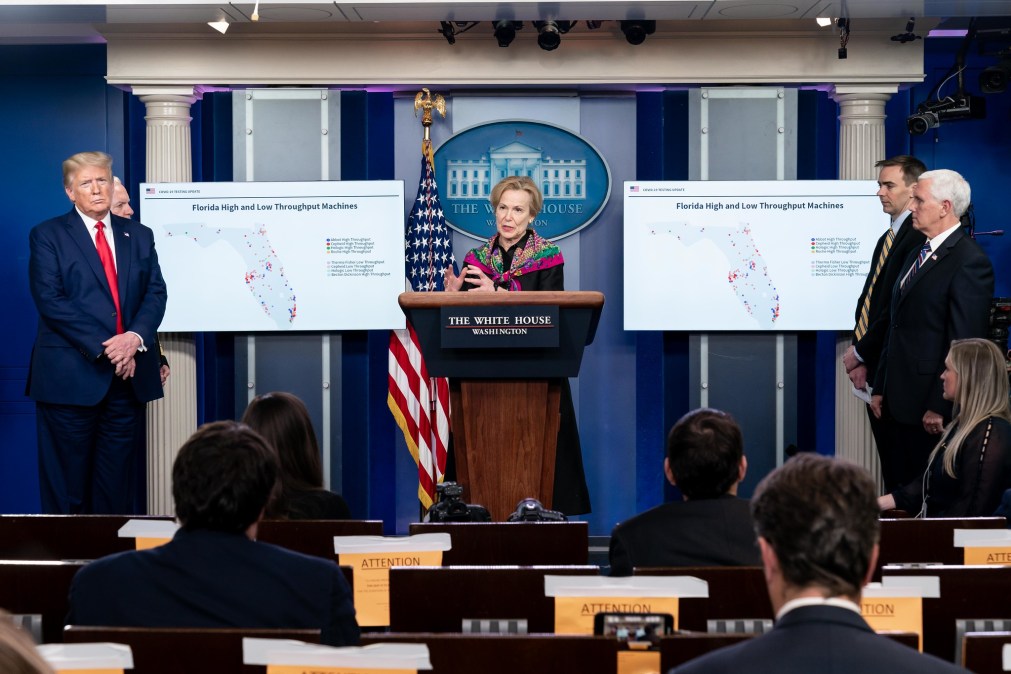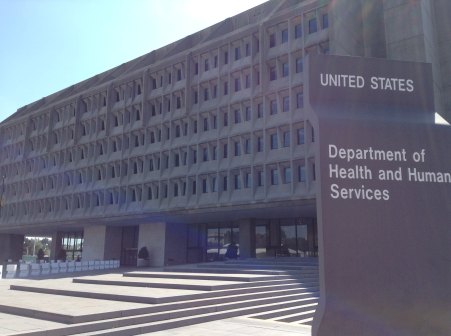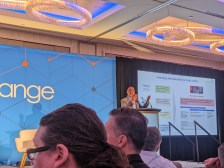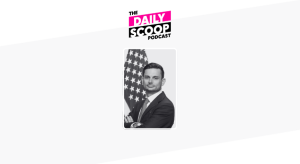Inside the HHS system informing White House coronavirus decisions

The Department of Health and Human Services created a system housing 187 datasets in nine days to support White House Coronavirus Task Force efforts to track and mitigate COVID-19’s spread.
Dubbed HHS Protect, the health insight platform pulls data from federal agencies, all 50 states, health care facilities and academia with contributions from private industry.
The HHS Office of the Chief Information Officer manages and continues to scale the platform, currently used by about 200 decision-makers and responders, José Arrieta, CIO and interim chief data officer, told FedScoop by email. Dr. Deborah Birx, Coronavirus Task Force coordinator, receives a nightly report on county-level COVID-19 cases nationwide compiled and analyzed in HHS Protect, which some documents have referred to as “HHS Protect Now.”
“Most importantly, the HHS OCIO team created a modern, flexible mechanism for transferring data and authenticating users within a short period of time,” Arrieta said. “We do not believe this would have been possible without the legal authorities provided to cabinet-level agency CIOs.”
HHS Protect has an authority to operate at the Federal Information Security Management Act moderate level — housing data that would have a serious adverse impact on agencies or people if compromised.
That data includes:
- Multiple COVID-19 case count sources for comprehensive visibility
- Hospital capacity, utilization, inventory and supply from states and territories
- Supply chain data from government and industry
- Diagnostic laboratory testing data
- Census population and demographic statistics
- Community-based testing sites
- State policy actions
- COVID-19 and flu-like emergency department data
The White House charged HHS’s OCIO with operating the support systems providing information products to the Coronavirus Task Force, which in turn decides what additional data is needed for understanding the environment and coordinating resources. In essence, the task force is the product owner and HHS OCIO the scrum master and developers, Arrieta said.
HHS leadership and personnel are embedded with the task force, and the department works closely with the Federal Emergency Management Agency’s National Response Coordination Center and its own Centers for Disease Control and Prevention to identify new data sources.
“HHS is a large organization, and we have vast datasets to pull from,” Arrieta said. “Our challenge is to maintain laser focus on the most valuable datasets to continue providing high fidelity information to the White House, FEMA and HHS decision makers.”
Last month, the Trump administration requested about 4,700 hospitals begin reporting COVID-19 testing data to HHS daily. The health care community has been a “tremendous partner” in providing visibility into the frontlines of coronavirus response, Arrieta said.
But just how many hospitals have heeded the call remains unclear.
“As far as I’m aware, there haven’t been any public data releases from that request,” said Nick Hart, CEO of the Data Coalition. “So there is still uncertainty about what level of reporting is happening there, as well as the availability of information for researchers or the public.”
The VA’s role in sharing data
Hospitals are but one component of HHS’s data-gathering efforts. The Department of Veterans Affairs is closely sharing data on normal health care operations and the pandemic from the 1,243 facilities where the Veterans Health Administration has a presence.
The VA collects data on diagnostics, lab results, imaging, and medications through its electronic health record (EHR) and other reporting systems.
“VA is transitioning from a manual reporting methodology using lab tests and self-reported data to a real-time bio-surveillance methodology utilizing medical records to create a real-time COVID-19 surveillance tool to track cases, admissions and outcomes,” said VA CDO Kshemendra Paul in an email. “The change in methodology further strengthens the overall timeliness and accuracy of the data, reporting and analytics.”
That system will feed data to partners like the CDC’s National Health Surveillance Network, FEMA and the Department of Energy, which will process it with supercomputing to assist Food and Drug Administration researchers developing therapeutic treatments.
The process of moving EHR data to national data warehouses for reporting and analytics is “mature,” and VA is working on integrating data from non-veteran populations not previously served directly, Paul said.
Paul is also part of the CDO Council COVID-19 Data Coordination Working Group.
“In this workgroup, federal agencies’ CDOs are coming together to share the current and planned work within their agencies, identify collaboration opportunities, and to share data resources,” Paul said. “This is an unprecedented collaboration for the federal government, and we are very proud of it.”
As a result of the working group, VA is partnering with the Department of Defense, HHS’s National Institutes of Health and private industry on COVID-19 diagnosis, prognosis, treatment and outcome studies.
The VA is also developing standardized national databases of demographic and clinical data, treatments and outcomes for all its patients infected with COVID-19 to facilitate rapid research. External organizations must meet VA’s privacy and security requirements before data is shared.
Meanwhile, HHS enabled “robust” permissions allowing data owners to grant access to non-public datasets on an individual basis, Arrieta said.
Adding additional datasets into HHS Protect allows data scientists to conduct more sophisticated modeling and generate clearer common operating pictures — like the one Birx receives every evening — of diagnostics, testing, virus spread, case data, and resource allocation. Data scientists also get a better idea of how multiple variables interplay, Arrieta said.
“Given the evolving nature of responding to COVID-19, we continue to advance and optimize our approaches to data gathering,” Arrieta said. “Speed of delivery is our critical success factor, as minutes and hours matter in what we are up against.”






